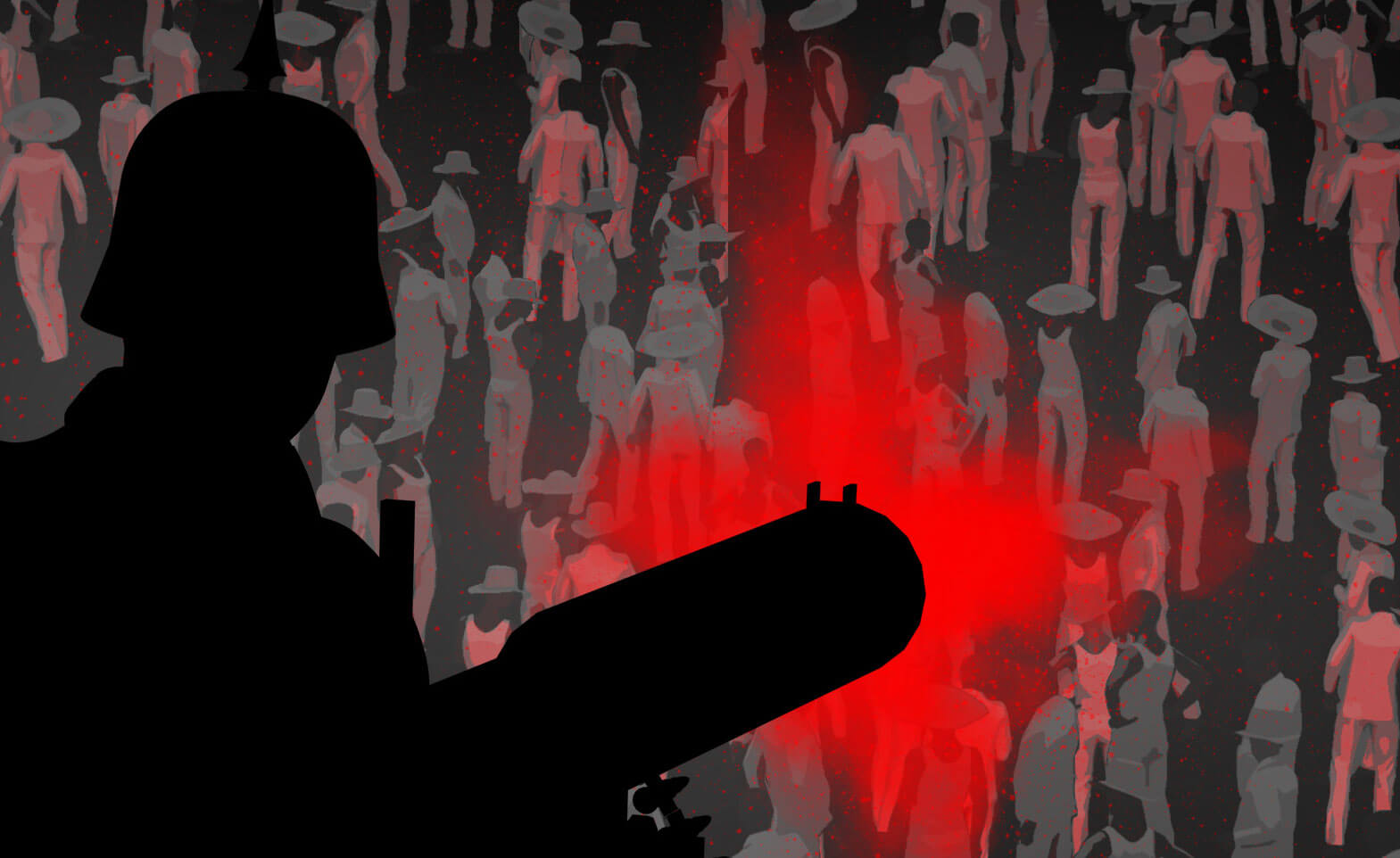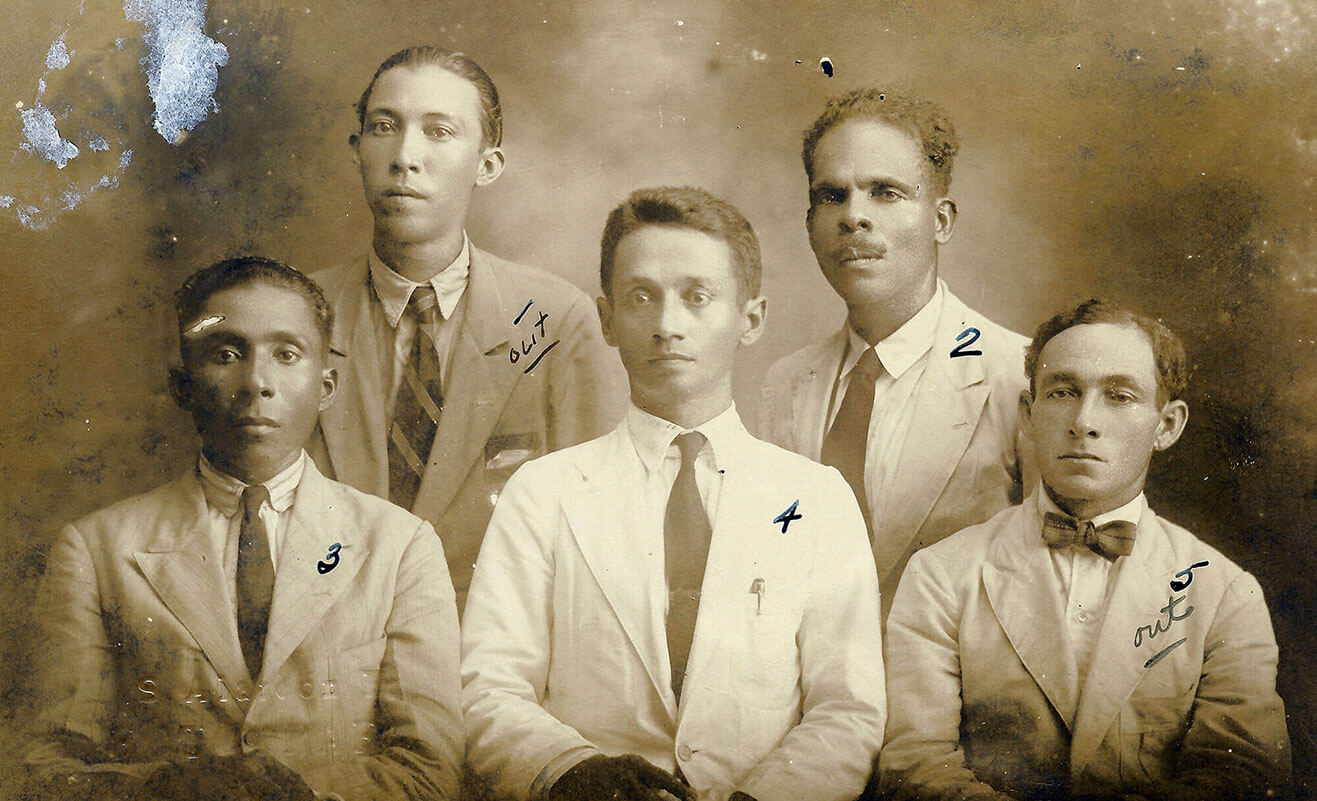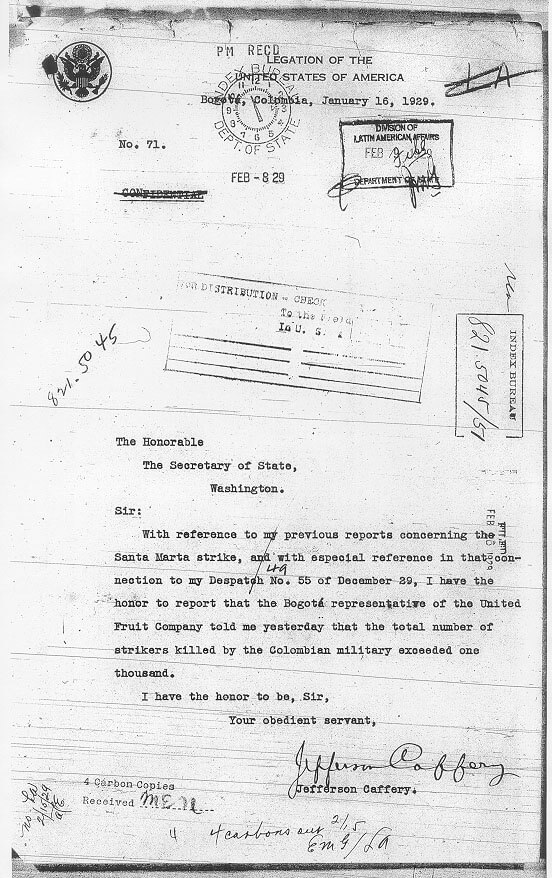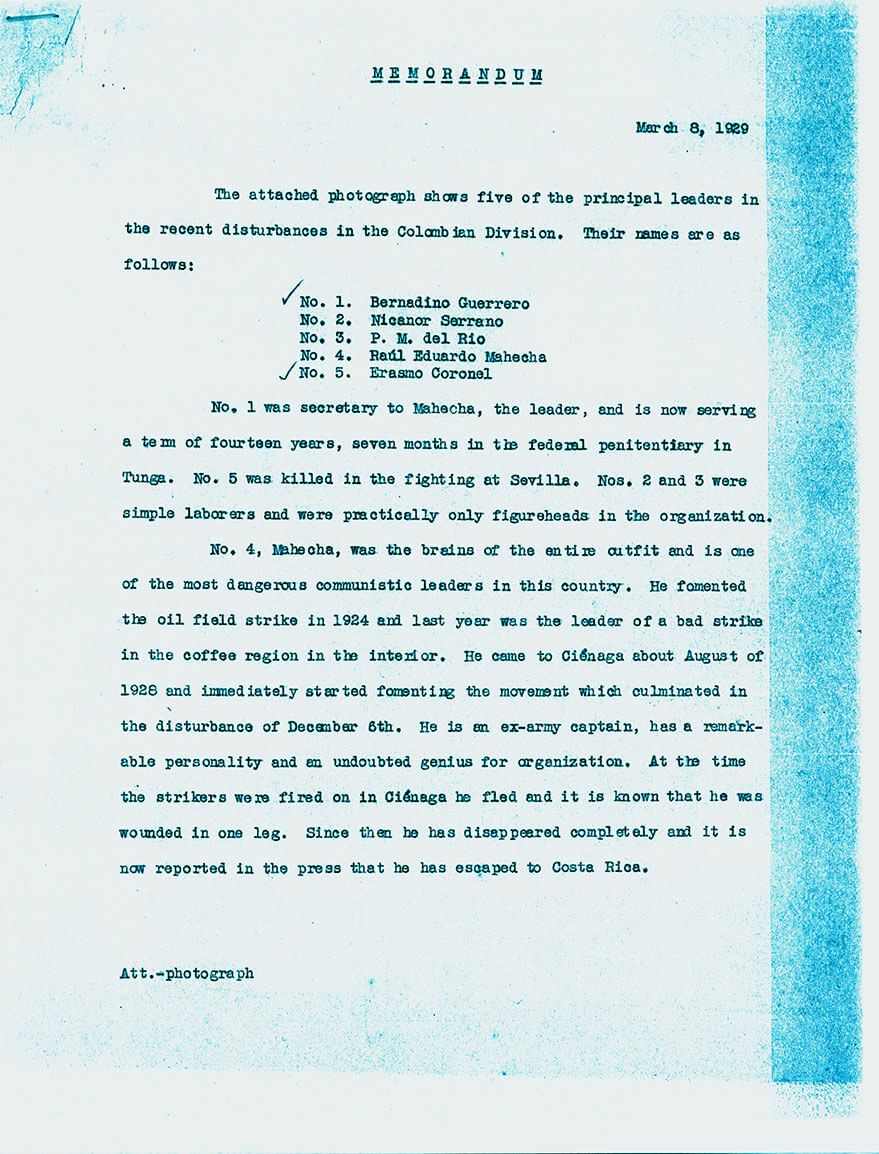
In 1928, the Colombian army opened fire on hundreds of banana workers who were on strike for better conditions, killing an untold number. This article uses an image wrested from corporate archives to imagine others that we don’t get to see.

The model of banana republics was challenged most forcefully by organized labor. While politicians, merchants, and multinational corporations often made patriotic noises, it was the banana workers themselves who actually demanded that the foreign companies respect the laws of the countries in which they were operating.
Consider Colombia.
On the evening of October 5, 1928, the delegates for Colombia’s banana workers in Magdalena gathered to discuss their grievances. Among their concerns were their long hours and low pay; one worker, Aristides López Rojano, remembered: “We worked from six in the morning until eleven and then from one in the afternoon until six.... The contractor paid the salary and reserved up to thirty percent for himself.” Erasmo Coronel (the one wearing the bowtie in the group portrait) spoke in favor of a strike, and the others agreed. At around five in the morning on October 6, 1928, the workers issued the United Fruit Company a list of nine demands.
On the first day of the strike, the commander of the Colombian armed forces appointed General Carlos Cortés Vargas as the military chief of Santa Marta and the banana zone. By the second day, Cortés Vargas was in Ciénaga with a battalion.
The strike lasted two months, during which time the workers briefly established popular sovereignty, deciding how best to organize themselves. One worker later recalled that when soldiers asked a group of striking workers who was in charge, they defiantly responded that they were all in charge—“todos éramos jefes.”1 The striking workers tested the United Fruit Company’s ability to continue to exert power through its ad hoc network of corporations, missionaries, and mercenaries backed by the military and diplomatic power of the U.S. government.
On December 5, the workers received news that the governor of Magdalena had summoned them to Ciénaga to settle the strike. They began to gather there by the thousands. Just before midnight, General Cortés Vargas received a telegram containing Decree Number 1, the government's official declaration of a state of siege in the banana zone. That night, the military opened fire on the assembled workers and their families at the train station in Ciénaga.
In his memoir, General Cortés Vargas recounts:
During the course of this last minute, we shouted: ”People, disperse, we will open fire!”
“We'll give you the remaining minute!” a voice shouted from the tumult.
We had complied with the penal code. The last bugle call ripped through the air; the multitude seemed stuck in the ground. It was necessary to comply with the law, and we complied: “Open fire!!” we shouted.2
In One Hundred Years of Solitude, Gabriel García Márquez altered the key sentence, adding one word so that the voice from the crowd addressed the soldiers directly: “Bastards, we'll give you the remaining minute!”

The people of the banana zone insisted that the military killed hundreds of strikers that night, but when daylight broke, according to official memory, just nine bodies lay in the plaza. Josefa María, who worked from Ciénaga to support the strike, noted that the military had deliberately left each corpse as a symbol: “They had only left nine dead bodies, equal to the nine demands that the workers made.”3
After the massacre, many workers fled, seeking refuge in the mountains. But others stayed and sought to avenge the killing of their companions. Meanwhile, the Colombian military and the United Fruit Company did not let up on their persecution of the workers. Six weeks later, the U.S. embassy in Bogotá reported that “the total number of strikers killed by the Colombian military exceeded one thousand.”

After the military opened fire on the striking workers in Ciénaga, the workers destroyed several of the United Fruit Company's buildings, including the engineers' quarters in Sevilla. That was where Erasmo Coronel was killed.
While we do not have photographs of the strike or the massacre, the official archive of the United Fruit Company at Harvard University extensively documents the destruction that the workers wreaked upon the company’s stores, living quarters, bodegas, and telephone lines as part of their protest.
The photo above encapsulates the way five labor organizers presented themselves to the public, and also the way that photographs were used to identify, select, and discipline (though that word seems too soft, given that the Colombian military killed one of the workers, jailed another for fourteen years, and tried to kill at least one of the others). Anthropologist Philippe Bourgois took the photo from a United Fruit Company warehouse in Panama in the 1980s. It is a straightforward studio portrait of five men, dressed in suits and ties. But on the surface of the image, someone labeled each one with a number and wrote the word “out” over two of them. The photograph had been fastened to an internal company memorandum with a paperclip, which damaged it in the corner.

Retrieving this photo from a violence that is preserved in the archive allows us to rescue the history that puts these workers—Raul Eduardo Mahecha, Nicanor Serrano, Bernardino Guerrero, Pedro M. del Rio, and Erasmo Coronel—at the center of a struggle over local and national sovereignty that exposed the violence exercised by the United Fruit Company and the governments of Colombia and the United States. The photo allows us to hear what the company tried to silence, to see what the company sought to keep invisible. Reclaiming this photo allows us to tell a story of worker-driven self- and national forging that banana progress tried to obliterate.
SOURCES
REFERENCES